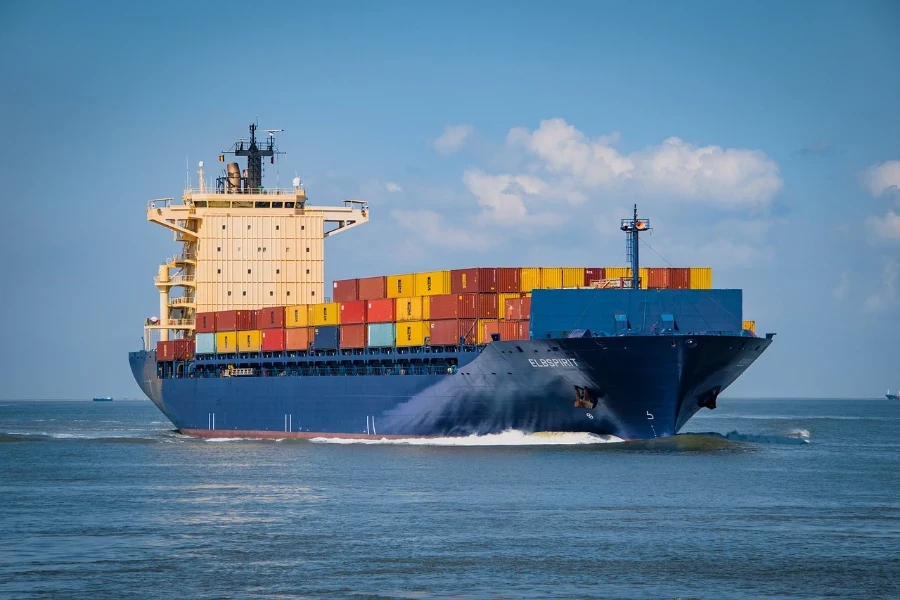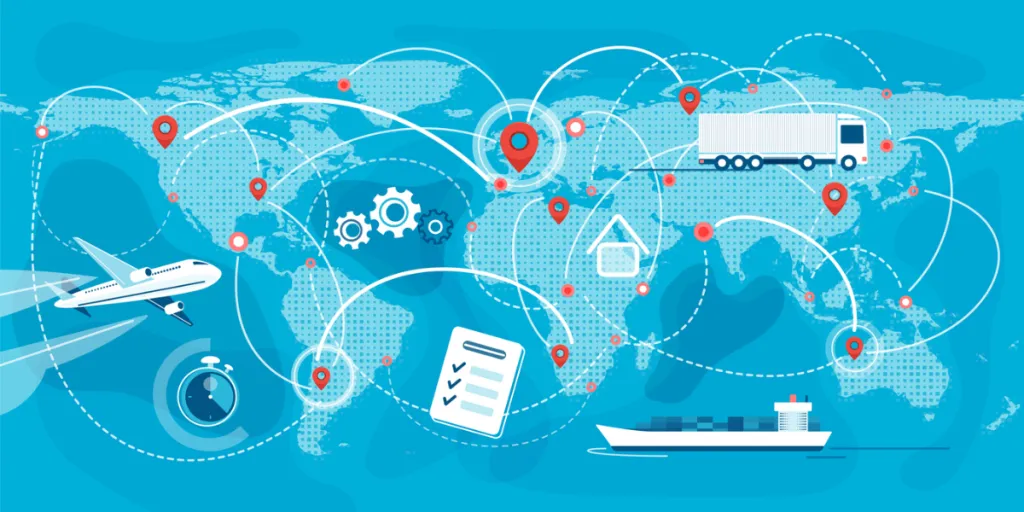Just as a culinary enthusiast struggles to find a single recipe book that encompasses the diversity of global cuisine, businesses grapple with managing the dynamic and occasionally turbulent waters of international trade, which requires maneuvering through customs, tariffs, and regulations across various borders.
Akin to how a well-followed recipe leads to a delightful and harmonious dish, the Global Trade Management (GTM) system emerges as the quintessential “recipe book” for global commerce. It serves as the master guide that blends the intricate “ingredients” of regulatory demands, logistical maneuvers, and compliance strategies into a cohesive and streamlined business operation.
The shift towards GTM systems, with the aid of compliance experts, offers automated and efficient strategies out of the maze of increasing regulations and changing tariffs today. Read on to find out what GTM is, how it works, and how to integrate it into a logistics system.
Table of Contents
What is GTM?
How does GTM work?
Why integrate GTM into an existing logistic system?
How to unify GTM with a logistic system?
GTM and logistics alignment amid complexity
What is GTM?
The term “global trade management” (GTM) might seem broad, as it covers virtually every aspect of the global trading process and environment. It is essentially all about adopting a holistic approach to address the complex, documentation-heavy, and communication-error-prone challenges of the logistic process through a highly automated and data-rich system, enhancing visibility throughout the entire process.
Basically, GTM solutions streamline and automate processes related to customs and regulatory compliance, global logistics, and trade financing, navigating the complexities of multiple timezones, currencies, and transportation methods involved in international trade.
This comprehensive approach, along with strategic data utilization, is also capable of optimizing routes and modes of transportation, facilitating import and export activities. It seeks to improve operational efficiencies and cash flows, significantly enhancing supply chain speed. Ultimately, such meticulous management reduces the risk of mis-declarations and ensures accuracy in trade compliance, vital for avoiding penalties and optimizing costs.
It’s worth noting also that however, not all GTM providers might strictly label their offerings as GTM systems or software as these providers aim to offer a more comprehensive suite of services that cater to various aspects of global trade and logistics operations, making their systems integral to the overall management of international trade activities but not limited to what might traditionally be categorized under GTM.
Such a decision of not explicitly labeling themselves as “GTM” might stem simply from product positioning or marketing strategies. It may also be due to it being merely part of the evolution of what GTM encompasses in a rapidly changing global trade environment since these solutions have grown to include more advanced features like AI, Machine Learning, and extensive data analytics, thereby blurring the lines between GTM and broader supply chain management solutions.
In any case, even if a provider does not explicitly market their solutions as GTM, their software could still be considered part of the GTM ecosystem if it includes core functionalities such as compliance and customs management, trade finance and documentation handling as well as supply chain visibility.
How does GTM work?

To highlight how GTM systems comprehensively support global trade management in the supply chain, let’s organize them around the natural flow of trade operations for clarity:
Foundation functions of GTM
The foundation functions of GTM involve the initial stage of getting the GTM system implemented and set up, with automation highlighted as an inherently integrated nature across all functions. These functions include tailor-made GTM systems according to the specific needs and preferences of the organization. Such customization emphasizes the role of automation, with automated configuration tools developed to ensure a seamless setup, while also covering the necessary maintenance and updating of the system as required.
Aside from initial config, trade finances are another fundamental function that the GTM systems are capable of handling. For example, automating financial transactions and assisting in the calculation of landed costs. Currency conversion in line with the fluctuating exchange rates, tariffs, and other financial factors affecting trade finance was also made possible with GTM. It also enables the organization to leverage trade financing options, such as letters of credit and supply chain finance.
Operational excellence functions of GTM
Optimizing the logistics process for efficiency is the most apparent operational excellence function of GTM systems. Utilizing automated algorithms to recommend the most cost-effective and efficient shipping routes and methods, optimization of the shipping modes, routes, carriers, and the overall costs of transportation can be achieved, including the tracking and tracing of shipments.
Meanwhile, proper management of documentation is another key factor that must be well taken care of in order to achieve logistics operational success. GTM systems digitally streamline the management and dissemination of documentation across multiple parties involved in global trade.
From commercial invoices and packing lists to bills of lading, and certificates of origin, creation, exchange, and storage of these essential trade documents are automated. It also includes the validation and verification of the documents to ensure their accuracy and compliance, thereby facilitating faster customs clearance and reducing the likelihood of manual errors.
Compliance and efficiency functions of GTM
GTM solutions facilitate efficient cross-border transactions and compliance with international customs requirements as they are equipped with automated features that continuously update to reflect the latest in duties, tariffs, trade agreements, and regulations of different countries and regions involved in the supply chain.
They facilitate compliance across the supply chain, from product development to sales and distribution, highlighting the interconnectedness of compliance with various aspects. The typical compliance processes in global trade, such as product classification, the requirement of export and import license, and customs clearance are covered.
Enhancing the overall logistics process visibility by supplying stakeholders with transparent, real-time information and data related to the supply chain operations is another key function of GTM systems. These include the status, location, and condition of the goods, the inventory levels, the demand and supply forecasts, as well as the performance indicators. It also includes the analysis and reporting of the data to generate insights and recommendations.
Strategic and growth functions of GTM
Risk management can be significantly simplified with the aid of GTM systems, as it leverages automation to identify, assess, and mitigate the various risks associated with global trade, including currency fluctuations and political changes. This process is facilitated through advanced analytics and data-driven insights, which are particularly effective in supporting risk management strategies like hedging, insurance, and contingency planning.
Similarly, planning for future resilience and strategic readiness becomes markedly more straightforward and intuitive with GTM systems. These systems are inherently designed for future-proofing, ensuring that businesses can swiftly respond to changes in trade regulations, market demands, and changing trends.
Why integrate GTM into an existing logistic system?
While GTM systems can operate independently, the synergy created by integrating GTM with logistics systems can lead to a more cohesive, responsive, and efficient supply chain.
Integrate GTM into existing logistics systems to avoid missed opportunities for efficiency and optimization to enhance operational visibility, improve compliance management, as well as to reduce the risk of delays and penalties associated with non-compliance.
Integrated systems allow for real-time data exchange, which can help in making more informed decisions, optimizing supply chain operations, and reducing costs.
How to unify GTM with a logistic system?
Before we proceed to discuss in detail how to integrate a GTM system with a logistic system, it’s crucial to understand that integration of a GTM system with an existing logistics system can be quite different from integration with a new logistics system.
Unlike existing systems where integration often involves navigating and retrofitting within established processes and infrastructure, new systems offer a clean slate, allowing for customization, and even the adoption of different technologies or a complete infrastructure update. In other words, such integration is typically a more straightforward process, as it affords greater flexibility in terms of system design and configuration.
As such, let’s focus more on how to integrate a GTM system with an existing logistic system since this is often more common and complex in view of existing data, infrastructure, and the importance of maintaining operational continuity without significant disruptions.
Whether it’s integration achieved through a platform format or an integration with the selective module, or a centralized data repository, digitalization, automation of operations and the following are the key processes:
Workflow alignment
First of all, it is paramount to match the GTM’s capabilities with the organization’s specific trade and logistics operations. This begins with evaluating and identifying the current and desired global trade processes and workflows to confirm areas for GTM integration.
Following the initial evaluation, the next critical step should involve comprehensive communication and alignment of the business processes and workflows with all internal and external stakeholders. This includes engaging with suppliers, customers, carriers, customs brokers, and regulatory bodies.
Transparent and effective communication with these parties is vital in ensuring that every party understands their role within the integrated system, which is crucial for the subsequent phase of staff training and management in the GTM process. This ensures that the GTM implementation aligns with the collective needs and compliance requirements of all stakeholders.
Furthermore, defining clear key performance indicators (KPIs) and metrics is essential to measure the effectiveness and efficiency of the GTM system in enhancing trade compliance and logistics operations. Simultaneously, the ability to establish new workflows or modify existing ones as needed is key to achieving seamless integration. In a nutshell, this step of workflow alignment sets the foundation for determining the necessary level of GTM system customization to improve existing processes and ensure smoother global trade operations.
Software integration and data consolidation
Upon completing the process alignment, it’s time for the relevant software integration and data consolidation. Software compatibility and efficient data migration are the keys to successful implementation at this stage. This is a critical step to confirm that the GTM system can access and exchange suitable data and information with other systems and applications consistently and accurately, including various existing IT systems, such as enterprise resource planning (ERP) and warehouse management systems (WMS).
Identifying these data and information requirements for the GTM system, including gathering comprehensive details on information related to product, order, shipment, compliance, and finance is essential to ensure that all required data types are accurately defined and sourced from up-to-date systems. Establishing data standards and formats is equally paramount too.
This implementation phase is subject to meticulous planning and execution while utilizing appropriate integration and consolidation methods and tools such as Application programming interfaces (APIs) for seamless data flow between the GTM and other systems. Finally, testing and validation of data integration and consolidation should be completed to verify data accuracy, completeness, timeliness, and reliability.
Staff training and management

Beyond workflow alignment and software as well as data consolidation, staff training and management are other often overlooked components in order to successfully complete the GTM system integration. In actual fact, from logistics managers and compliance officers, to finance and IT staff, these individuals must first possess the necessary skills and knowledge on changes and new functionalities introduced by the integration.
This involves designing comprehensive training programs tailored to these user roles within the organization, with the incorporation of change management strategies to facilitate staff motivation and adaptation to the new system.
Training materials including modules, manuals, videos, and relevant feedback mechanisms should be developed and evaluated through assessments and follow-ups. Subsequent training efforts may include regular updates, refreshers, and recognition programs to keep staff informed for further GTM system enhancement to meet the evolving needs and demands of the organization and the market.
Continuous monitoring and optimization
Even after the completion of staff training, continuous monitoring and optimization are crucial to ensure the system’s effectiveness. Data analytics should also be relied upon to pinpoint areas for improvement. By regularly assessing the GTM system’s impact on operations, organizations can identify any inefficiencies and analyze the best practices for system enhancement.
The organization should collect and analyze performance data, prioritizing issues and opportunities for optimization. For example, improvement actions range from process refinement and system upgrades to policy changes based on stakeholder feedback.
Moreover, the GTM system’s performance goals and targets should be regularly reviewed and updated through benchmarking, forecasting, and scenario planning. This adaptive approach guarantees the GTM system remains a valuable, efficient tool for the organization, continually delivering on its promises and adapting to both internal and external shifts.
GTM and logistics alignment amid complexity
Global Trade Management (GTM) serves not only as a tool, but a holistic strategy for navigating the complexities of international trade, offering a structured approach to manage the entirety of trade operations from foundational functions like implementation, configuration, and financial management to the more intricate aspects of compliance and strategic growth. Basically, GTM ensures that every step, including optimizing logistics for efficiency, simplifying documentation, and enhancing supply chain visibility, is executed with precision supported by automation and relevant, real-time data. It also empowers risk management strategies and future-proofs businesses against the unpredictable nature of global trade.
The integration of GTM into existing logistics systems is crucial for businesses looking to optimize their supply chain in a complex global environment. By aligning workflows, consolidating data, and focusing on continuous improvement, businesses can achieve unparalleled coordination in their trade and logistics operations. GTM and logistics coordination in a complicated environment thus become a strategic imperative for companies striving for global success.
To immerse in the updates and insights of the supply chain industry or to explore new market opportunities, visit Alibaba.com Reads from time to time for knowledge and innovation in global trade and ecommerce.

Looking for a logistics solution with competitive pricing, full visibility, and readily accessible customer support? Check out the Alibaba.com Logistics Marketplace today.




